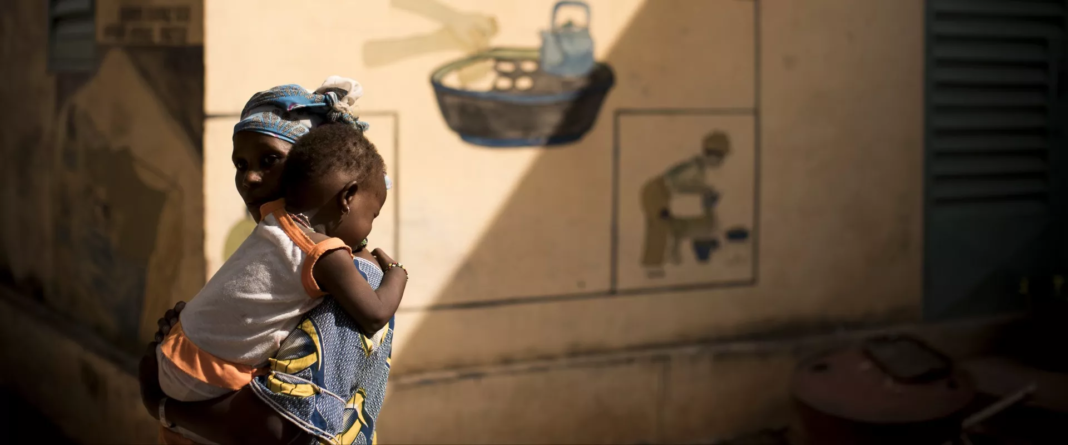A groundbreaking study released on December 13, 2023, by Action Against Hunger, a leading nonprofit organization in the global movement to end hunger, has revealed that a significant percentage of children who are successfully treated for severe acute malnutrition (SAM) are vulnerable to relapse.
The study, the first of its kind, tracked the outcomes of children treated for SAM across three different countries: Mali, Somalia, and South Sudan. It monitored their progress for six months after treatment and compared it to their otherwise healthy peers.
“Each year, we treat millions of children for malnutrition, and most of the time, they make a full recovery. Yet, we have long wanted to know what happens after they leave our treatment centers,” said Heather Stobaugh, PhD., a Senior Research and Learning Specialist at Action Against Hunger and the principal investigator of this study.
The study found that children recovering from malnutrition are extremely vulnerable and tend to be smaller, thinner, and shorter than their peers who have not been malnourished. Practitioners can realistically expect a large proportion of recovered SAM children to relapse, as high as 30-50% in some rural and resource-limited settings.
Key Findings
Urban vs Rural Context
The study found that relapse rates are nearly 50% higher in rural areas, where populations have limited access to healthcare, cash, or other assistance programs. In contrast, in urban Mogadishu, Somalia, researchers observed low relapse rates (5%), even among internally displaced populations. The study authors hypothesize that access to services such as healthcare, cash, remittances, and food distributions play a significant role in determining the longer-term well-being of children after they recover from SAM.
Need for Longer-Term Services
Children who recover from SAM are up to five times as likely as their peers to need future intervention after being malnourished. Prior to this study, it was assumed that children who recovered from malnutrition are as healthy as their peers, yet these new findings suggest the risk for poor outcomes is much higher once a child has experienced SAM. This potentially opens the door for follow-up services that could reduce the health impacts and costs associated with relapse.
Quick Responders More Likely to Sustain Recovery
Children who respond quickly to treatment for malnutrition are more likely to sustain their recovery, even if they live in households dealing with food insecurity. The study authors hypothesize that those who do not respond quickly to initial treatment likely have extenuating biological or social factors that hinder their response to treatment and continue to be problematic after treatment.
Boys More Vulnerable Than Girls
In Mali, researchers found that boys, as opposed to girls, are more likely to relapse to malnutrition. This coincides with other new findings showing boys are generally more susceptible to acute malnutrition than girls.
Community and Context Matters
Broader community and context matter more to sustaining recovery from malnutrition than factors associated with specific individuals or households. This insight helps organizations like Action Against Hunger to better understand in which contexts children will be more vulnerable after initial recovery. Also, it could lead to solutions that focus on providing households greater access to community-wide services, such as healthcare, cash transfers, or other support services.
“After we provide medical treatment, children who have recovered from malnutrition still need continuous monitoring and support to prevent them from falling back into a malnourished state,” says Sarah King, a Nutritional Epidemiologist with the U.S. Centers for Disease Control and Prevention’s (CDC) Humanitarian Health team who led the implementation of the study in the three countries.
“Sustained recovery from malnutrition requires access to affordable, high-quality food. Also, relapse seems to be significantly influenced by local availability of other services such as access to healthcare, clean water, and cash transfers, as well as family and other community-level support. This is a testament to the importance of multi-sectoral interventions after medical intervention to successfully save lives.”
“There is still a lot we do not know, and as a next step, we hope to secure funding for future research that tests new approaches to ensure that children sustain their recovery and can thrive in childhood,” Stobaugh said. “With a global hunger funding gap of 53 percent, we need evidence-based ways to make aid budgets stretch farther and act as efficiently as possible. Ideally, we need solutions that don’t involve re-treating the same children over and over again.”
The research spanned different types of treatment centers run by government health agencies, nonprofit humanitarian groups such as Action Against Hunger, and a hybrid model where a nongovernmental organization (NGO) helps to build government capacity. To collect the data, full-time research staff from Action Against Hunger were hired and trained to measure children, conduct surveys, collect samples, and more, building their own capacity to go on to work in further research projects.
“While it is too early to make definitive recommendations on proven interventions that reduce relapse, we hope that new evidence will translate into more effective programs,” Stobaugh said. “These findings suggest that assistance programs should be targeted toward children who were previously severely malnourished, and that additional focus should be placed on rural contexts with lower access to community and social services. We also need resources to test new interventions that could help prevent relapse.”
The study was released shortly after the World Health Organization (WHO) issued updated guidelines for managing acute malnutrition in childhood. While the WHO acknowledged the importance of so-called “post-exit” outcomes, its new guidelines provide relatively little information on the topic, highlighting the need for this type of research and further studies on the important issue.
“Ultimately, we hope this kind of research will help the WHO to better define relapse after initial recovery from malnutrition and to set targets for humanitarian organizations and governments alike,” Stobaugh said. “Today, the humanitarian and health sectors have an accepted target for at least 75% of treated children to recover from malnutrition. We should have similar goals for an annual reduction in the number of children who relapse once treatment is complete.”
A global media for the latest news, entertainment, music fashion, and more.




